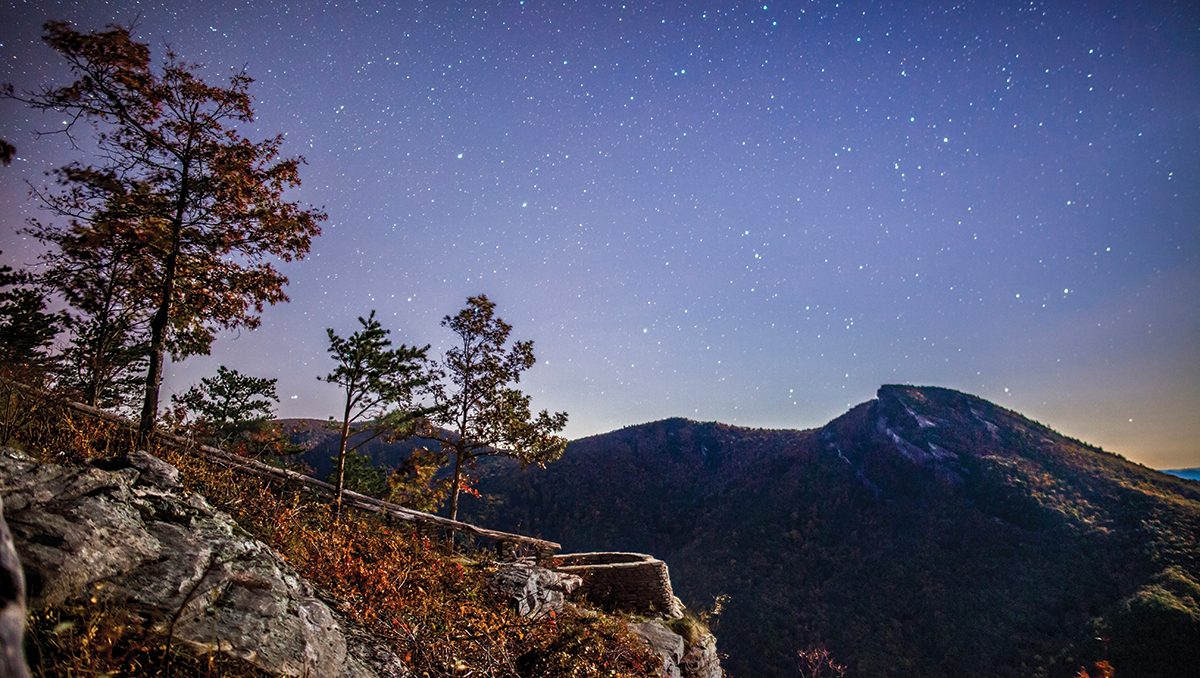
Wiseman’s View. Photo courtesy of Visit North Carolina
Daniel Caton has spent most of his life explaining the night sky. As an astronomy professor at Appalachian State University, he can tell you which dot is Jupiter, which streak is a plane and which flicker is just a satellite catching the sun. But one evening at Wiseman’s View—an overlook perched high above Linville Gorge in Burke County—he saw something he still can’t explain. “I was staring at the sky when suddenly a bright light appeared—brighter than any planet,” Caton says. “After a few seconds, it dimmed and disappeared. I don’t know what it was.”
For Caton, that quick flash was his first and only encounter with the Brown Mountain Lights, a mystery that has puzzled onlookers for nearly two centuries.
Firsthand accounts of the lights are wildly inconsistent. Some witnesses swear they float up from the gorge like glowing orbs. Others describe firework-like bursts on the horizon or lantern-like lights drifting silently across the ridgeline.
Folklore has only deepened the mystery. One tale claims the lights are the ghosts of a murdered mother and child. Another says they are the spirits of Cherokee and Catawba women searching for their loved ones who died in battle. In the 1960s, a furniture salesman claimed he followed a glowing orb into a cave, where it revealed itself as a gas-based lifeform from Venus before spiriting him away on a cosmic journey.
Caton has spent decades chasing scientific explanations. For several years, he and his team even aimed cameras at Brown Mountain, logging thousands of hours of overnight footage. “But we didn’t get squat,” he says. “It’s difficult to study something that’s random.”
Undeterred, he turned to other possibilities. One theory was swamp gas, a mix of methane and other gases released when vegetation decays in marshy areas. Under the right conditions, the gas can ignite and give off a faint glow. “One of our team members hiked up there and put a jar over a source of swamp gas in a marshy area, then lit it,” Caton explains. “And yes, you can do that. But it’s just not energetic enough to be what people describe.”
Another idea was that small geologic shifts underground might squeeze rocks and create sparks through the piezoelectric effect—the same principle that produces the spark in a gas grill igniter. But, Caton says, “there’s just not enough activity here to make it work.”
Plenty of reports do have simple explanations. From Wiseman’s View, taillights winding along Highway 181 can look like mysterious orbs. Airplanes leaving Charlotte can also look eerie on the horizon.
Caton’s leading theory is ball lightning—a rare and unpredictable occurrence where glowing spheres of energy appear without warning, drift across the sky and vanish just as suddenly.
Still, the fleeting phenomenon is hard to pin down. And that elusiveness may be the true power of the Brown Mountain Lights. As Caton puts it, “The myths of the lights will outlive me.”
To learn more, visit DanCaton.Physics.AppState.edu.






